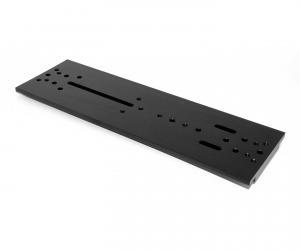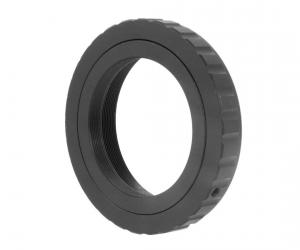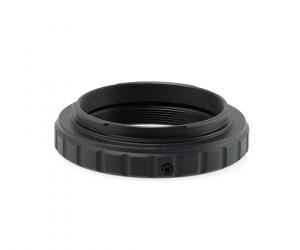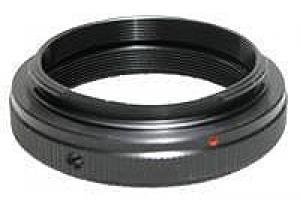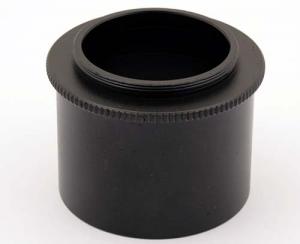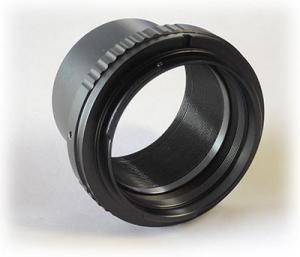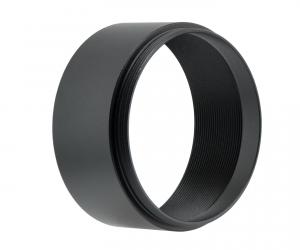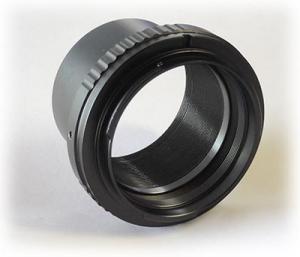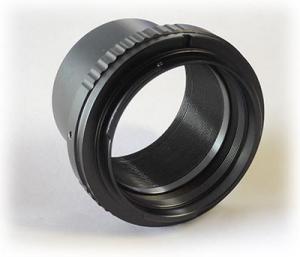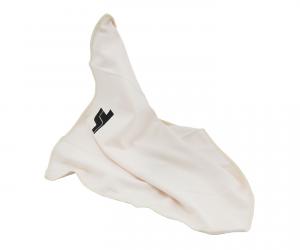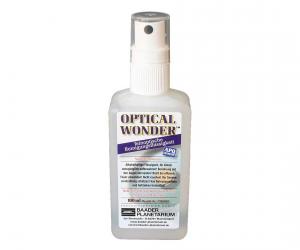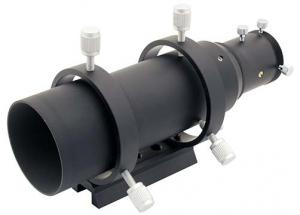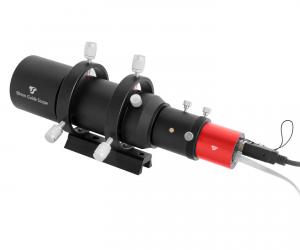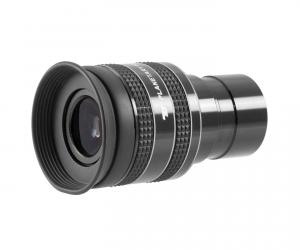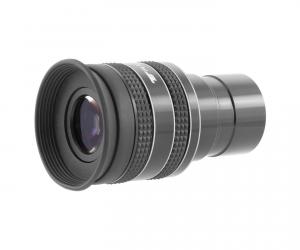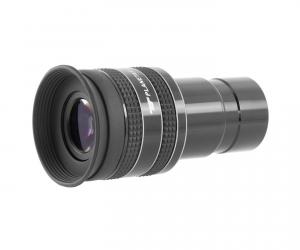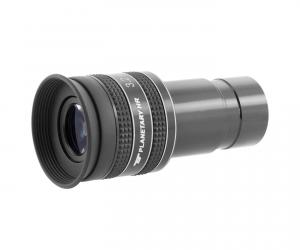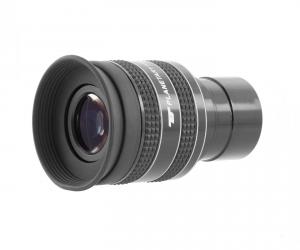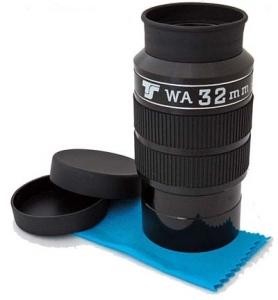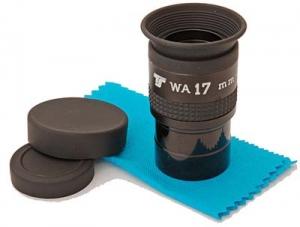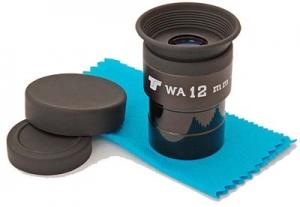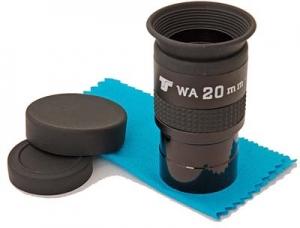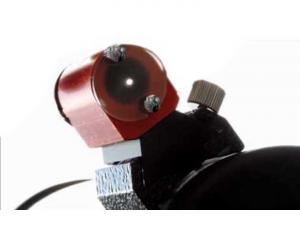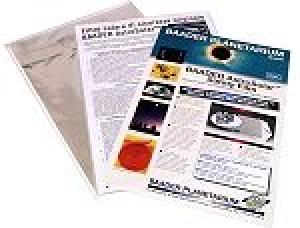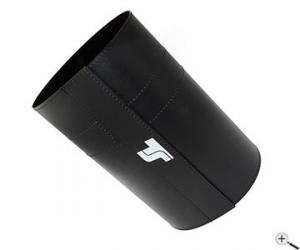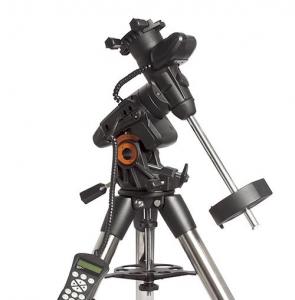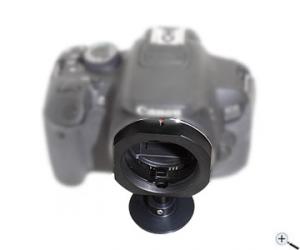- Telescopes
- Overview:
Telescopes - Achromatic Refractor
- Apochromatic Refractor
- Overview:
Apochromatic Refractor - ED Refractor - less color aberration than an achromatic
- SD APO - color free 2-element APO objective
- EDT APO - 3 element ED objective
- High End APO with 3-element APO objective - no color aberation
- Flatfield APO with flat field for Astrophotography
- All Apos and EDs from all manufacturers - large overview
- TS APO and ED from Japan with high quality optics
- Overview:
- Newtonian Telescopes
- Dobsonian Telescopes
- RC Ritchey Chretien Telescopes
- Casssegrain Telescopes
- Reflektor Telescopce with Lens Correcture
- Maksutov Cassegrain Telescopes
- GoTo Telescopes
- Solar Telescopes H-Alpha
- Overview:
- Mounts Tripods Rings Rails Power Supply ...
- Overview:
Mounts Tripods Rings Rails Power Supply ... - Mounts Equatorial with GoTo
- Mounts Equatorial without GoTo
- Mounts Azimutal with GoTo
- Mounts Azimutal without GoTo
- Mounts GoTo - Harmonic Drive
- Travel mounts for astro imaging
- Tripods Piers Polar Wedges
- Mount Control & Electronics
- Dovetail Clamps, Plates and Mount Adapters
- Tube Rings
- Power Supply
- Counterweights Balance Weights
- Mount Accessories - Other
- Overview:
- Telescope Accessories
- Overview:
Telescope Accessories - Eyepieces
- Barlows & Reducer Lenses
- Diagonal Mirrors and Prisms
- Binocular Viewers
- Finder Scopes
- Telescope Collimation and Test
- Cleaning Tools
- Transport and Storage
- Dust protection for Telescopes & Accessories
- Stray Light Protection
- Dewcaps and Heater
- Focusers, Adapters, Motorfocus
- Telescope DIY & Improvement
- Other telescope accessories
- Replacement Parts
- Overview:
- Filters
- Overview:
Filters - Color Filters and Color Filtersets
- Nebular Filters for Visual Observing
- Neutral-Density and Polfilter
- Photo Narrowband Nebular Filters
- Photo Broadband Filters
- Photo Planetary Filters
- Photo R-G-B and IR Cut Filters
- Photo - Filtersets
- Photometric Filters
- Clip Filter for DSLR Cameras
- Filter Wheels and Filterslider
- Solar Filters for white light
- Solarfilter for H-Alpha and Calcium
- Overview:
- Adaptors
- Overview:
Adaptors - Adapter 1,25" and 24,5mm
- Adapter 2"
- Adapter T2 - M42x0.75
- Adapter M48x0,75
- Adapter M54
- Adapter SC
- Adapter M63
- Adapter M68
- Adapter to other Threads
- Adapter Extensions
- Adapter camera bayonet
- Adapter Objective Filterthread
- Adapter Quick Changing , Rotation
- Adapter Eyepiece Projection
- Adapters Tilting
- Overview:
- Astrophotography and Photography
- Overview:
Astrophotography and Photography - Cooled Cameras
- Cameras without Cooling
- Deep-Sky Cameras uncooled
- Set-Offers Camera, Filter, Wheels
- Acessories for Cameras
- Travel mounts for astro imaging
- Imaging Correctors for Telescopes
- Autoguiding Cameras & Sets
- Everything for Guiding
- Focusing aids - Bahtinov mascs
- Flat Field foils and boxes
- Lenses for Cameras
- Piggyback Camera Holder
- Camera Bags, Photocases & more
- Digital Camera and Smartphone Adapter
- Other photo accessories
- Overview:
- Binoculars, Spotting Scopes, Microscopes, Range Finders
- Overview:
Binoculars, Spotting Scopes, Microscopes, Range Finders - Roof Prism Binoculars
- Binoculars with Porro prisms
- Binoculars from 100mm Aperture
- Binoculars with 1,25 inch eyepieces
- TSMX APO Binoculars
- Binoculars for Astronomy
- Binoculars Hiking Bird watching
- Monoculars - Opera Binoculars
- Accessories for Binoculars
- Spotting Scopes
- Range Finders
- Microscopy
- Bags for Phototripods & Binoculars
- Overview:
- Phototripods and Binomounts
- Books, Software
- Overview:
Books, Software - Books for Astronomy Beginners
- Star Charts and Planispheres
- Books about our Solar System
- Observing Tips for Amateurs
- Popular Astronomy Literature
- Teaching material
- Astrophotography books
- Telescopes, Observatories, Construction
- Calendars Yearbooks
- Software, Star Charts
- Books for Microscopers
- Books Nature and Animals
- Nature Photography TimeLapse
- Overview:
- Night Vision, Magnifiers, Weather, Domes & more
- Beginner Astronomy and Gift Ideas
- Second Hand & Special Offers
- New products
Manufacturer: Skywatcher
Product number: SKMN190
EUR1795.00new
EUR 1.795,00
incl. 19 % VAT (DE)
The VAT indicated refers to that applicable in Germany. After logging in, the VAT amount is adjusted to the applicable VAT of the stored delivery country. Therefore, the final price may vary accordingly.
excl. 45.95 € shipping costs (DE)
more details to the shipping costs ...Please log in to calculate shipping costs to your country.
There are no reviews for this product
- Details..
- Technical data..
- In the box..
- Reviews..
- Manufacturer infos..
- Safety informations..
Skywatcher Maksutov-Newtonian Telescope MN 190/1000
The Maksutow-Newtonian is a true alternative to conventional Newtonian telescopes with coma correctors. The telescope provides large aperture, high speed and excellent field correction. That are exactly the requirements for a dream telescope for astrophotography. Furthermore, the Maksutov-Newtonian also offers a very good visual performance with an image quality close to an apochromatic refractor.The advantages and features at a glance:
Astrophotographic results obtained with this telescope on Astrobin
Here you can find some astrophotographs made with this telescope model: Link to Astrobin| Telescope system: | Maksutov Newtonian |
| Aperture: | 190 mm |
| Focal length: | 1000 mm |
| Focal ratio: | f/5.3 |
| Resolving power: | 0.61" |
| Tube weight: | 12.3 kg |
| Primary mirror: | Spherical - mirror substrate Pyrex |
| Meniscus lens: | Multi-coated - manufacturer Schott |
| Secondary mirror: | Diameter 64 mm |
| Reflective coating of primary and secondary mirror: | 94% enhanced reflectivity |
| Focuser: | 2" Crayford focuser, dual speed |
| Connections at eyepiece side: | 2" + 1.25" with integr. extension |
| Tube diameter: | 235 mm |
Astrophotographic results obtained with this telescope on Astrobin
Here you can find some astrophotographs made with this telescope model: Link to AstrobinPhotographic results with the Mak Newtonian
 Crescent Nebula with the Mak Newton 190/1000mm - by Wolfi Ransburg
Crescent Nebula with the Mak Newton 190/1000mm - by Wolfi RansburgOnly two days after full moon, I have pointed the 190 mm Mak Newtonian to NGC 6888, basically just for testing field sharpness and image characteristics of the Maksutov Newtonian. The instrument immediately convinced with good sharpness over the entire field, so I exposed the Crescent Nebula 6x15 minutes, despite that the moon had risen in the meantime.
Imaging camera was the ATIK 4000 with 23 mm sensor diagonal. The Mak Newtonian provides excellently sharp stars over the entire format.
 Helix Nebula with the Mak Newtonian 190/1000mm - by Wolfi Ransburg
Helix Nebula with the Mak Newtonian 190/1000mm - by Wolfi RansburgOnly in the Bavarian foothills of the Alps the Mak Newtonian achieves its full potential. High speed and good field correction allow imaging even fine structures in nebulae. I exposed a total of three hours through the Mak Newtonian. The telescope has maintaned sharpness optimally all the time.
Jupiter with the Skywatcher 190mm Maksutov Newtonian
Photographer Markus Langlotz The 190/1000mm Maksutov Newtonian is not just a very good optics for nebulae and galaxies, it also shows excellent performance on moon and planets, as the jupiter image from Markus Langlotz proves. We sicerely congratulate to this outstanding result.
The 190/1000mm Maksutov Newtonian is not just a very good optics for nebulae and galaxies, it also shows excellent performance on moon and planets, as the jupiter image from Markus Langlotz proves. We sicerely congratulate to this outstanding result.Photograph from Uli Klein:
 1.: M51
1.: M51Camera: Canon 1100Da
Exposures: 42 frames with 3 minutes each, 2.1 hours altogether, ISO 3200.
Autoguiding using Lacerta MGEN and TSOAG9EOS-Off-Axis-Guider for EOS.
Focusing using Bahtinov maks.
Stacking with Deep Sky Stacker; astrometry with Astroart; slight increase in color saturation using IrfanView.
One can see a large number of more distant galaxies in the field. M51 shows already the tidal bridge in the region of the companion NGC5195.
Mount N EQ6 SynScan - SkyScan Pro. Everything purchased at TS.
 2.: Jupiter
2.: JupiterCamera: ZWO ASI 178MC color camera.
Photograph from 30.12.2016, 6:51 CEST using Firecapture; AVI sequence of 78.7s duration, 19 FPS, 50.5 ms exposure time per frame.
20% of the frames averaged with Autostakkert2.
Wavelet filtering and RGB alignment using Registax.
Here the surface of Jupiter already shows many details, in particular the Great Red Spot. To the east, one can see the moons Io and Europa.
Everything purchased at TS.
Best regards, also to the team, and many thanks again for the good advice!
Uli K.
| Manufacturer / Importeur: | Optical Vision Limited |
| Street: | Duracher Straße 11 |
| ZIP / City: | 87437 Kempten |
| Country: | Germany |
| Telefon number: | +49 831 697288210 |
| Email: | accounts@opticalvision.co.uk |
| Website: | www.opticalvision.co.uk |
Safety informations: PDF Download
Recommended accessories
Accessories for mounts
Adaptors
TS-Optics Focal Adapter from 2 Inch to T2 (M42x0,75)
EUR 29,90RRP EUR 34,90you save 14.3% (EUR 5,00)
Cleaning & Collimating
TS-Optics Optical Super Microfiber Cleaning Cloth
EUR 4,99RRP EUR 7,95you save 37.2% (EUR 2,96)
Customers who bought this product also bought...
Eyepieces
TS-Optics 9 mm Planetary HR - 1.25" Eyepiece, 58°, fully multi-coated
EUR 69,00RRP EUR 79,00you save 12.7% (EUR 10,00)
TS-Optics 7 mm Planetary HR - 1.25" Eyepiece, 58°, fully multi-coated
EUR 69,00RRP EUR 79,00you save 12.7% (EUR 10,00)
TS-Optics 5 mm Planetary HR - 1.25" Eyepiece, 58°, fully multi-coated
EUR 69,00RRP EUR 79,00you save 12.7% (EUR 10,00)
TS-Optics 3.2 mm Planetary HR - 1.25" Eyepiece, 58°, fully multi-coated
EUR 69,00RRP EUR 79,00you save 12.7% (EUR 10,00)
TS-Optics 8 mm Planetary HR - 1.25" Eyepiece, 58°, fully multi-coated
EUR 69,00RRP EUR 79,00you save 12.7% (EUR 10,00)
TS-Optics 12 mm 1.25" - 60° Wide Angle Eyepiece
EUR 49,00RRP EUR 89,00you save 44.9% (EUR 40,00)
TS-Optics 20 mm 1.25" - 70° Wide Angle Eyepiece
EUR 59,90RRP EUR 89,00you save 32.7% (EUR 29,10)
Finder & Accessories
General Accessories
TS-Optics flexible Dew Shield for tube diameter from 230 to 270 mm
EUR 52,90RRP EUR 59,00you save 10.3% (EUR 6,10)
ZWO EAF focus motor with USB-C connection for power supply and data transfer
EUR 249,00RRP EUR 257,00you save 3.1% (EUR 8,00)
Mounts
Celestron AVX GoTo Mount for Astronomy and Astrophotography
EUR 1.249,00RRP EUR 1.495,00you save 16.5% (EUR 246,00)
Photo Acessories
TS-Optics Off-Axis Guider for Canon EOS cameras - replaces the T-ring
EUR 129,00RRP EUR 199,00you save 35.2% (EUR 70,00)
Transport & Covers
Reviews












